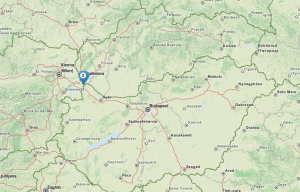Nationalism And Political Mobilisation
After the fall of the communist regime in Slovakia, social phenomena which had until then been repressed began to make itself apparent. As a country in transition with a multi-ethnic composition, nationalism was considered important for political mobilisation.
One of the main targets of the far-right in Slovakia are the vulnerable Roma community, estimated as making up at least 10% of the population. In fact, the country has the highest percentage of Roma population in Europe. There is an approximate 10% employment rate in the Roma community, with almost two thirds giving up on job hunting. The long-term unemployment that followed after low-skilled jobs disappeared, coupled with a low standard of education for Roma children led to social segregation and exclusion. There are over 620 Roma settlements in Slovakia, and around 40% of Roma live in segregated, substandard living conditions. Poor living conditions intensify health problems through limited access to drinking water, high presence of vermin, parasites and carriers of disease and infection.
Discrimination against Roma begins early on, with routine segregation in schools through “Roma only” classes, or by unjustifiably placing them in special schools for children with physical, mental and learning disabilities; currently 60% of pupils in such schools are Roma.
See all activities in this country:


